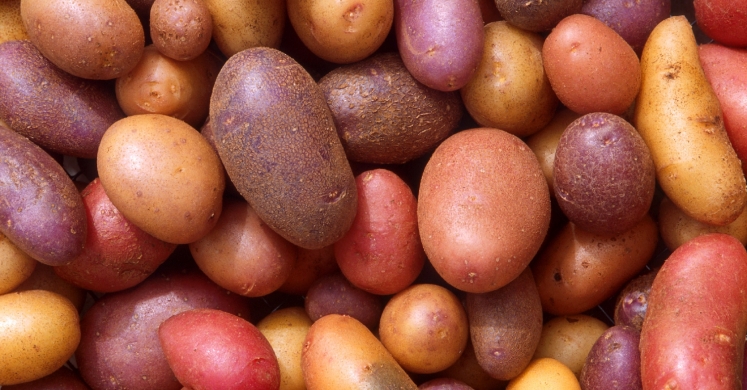Blog

#bioPGH Blog: It’s Super Duper Tuber Time!
 A resource of Biophilia: Pittsburgh, #bioPGH is a weekly blog and social media series that aims to encourage both children and adults to reconnect with nature and enjoy what each of our distinctive seasons has to offer.
A resource of Biophilia: Pittsburgh, #bioPGH is a weekly blog and social media series that aims to encourage both children and adults to reconnect with nature and enjoy what each of our distinctive seasons has to offer.
The biology of this week's big meal is fascinating. We already know that turkeys are quite the gobble (and I hope you get your wish!), corn is a-maize-ing, and pumpkin pie is the spice of life, so let’s dig a little deeper into the biology of a holiday dinner staple: tubers.
Potatoes are among the world’s most common crops because of their high energy content, which comes from all of the starch in a potato. Essentially, a potato is a tuber - a specialized portion of a plant that can store starch. But is the potato tuber a stem or a root? Even though it’s underground, the tuber that we eat is actually a modified stem. More precisely, potato tubers are actually enlarged portions of a particular kind of modified stem called a stolon (similar to a rhizome, if you are familiar with ginger). Stolons can produce their own new roots and shoots, which you probably discovered if you have ever forgotten a bag of potatoes in the back of the cupboard and found all sorts of growth extending from the “eyes” (actually called axillary buds). The potato’s ability to form new growth is why farmers are more likely to use “seed potatoes,” simply cut up potatoes, to grow the next round of crops. Planting from actual seeds can take quite a long time and is rarely done unless the grower is trying out new varieties of seeds.

Russet potatoes
Similarly, yams are also stem tubers. Our word "yam" can refer to a large number of viny plant species, some of which can grow to be up to 35 feet long. Like the potato the underground portion of the plant contains an enlarged stolon, and in this case the tuber has a tougher outer skin to protect the stored starch.

Yams
Sweet potatoes, on the other hand, are tuberous roots. Unlike yams and potatoes, what looks like a root really is a root, though it is still used for starch storage, classifying it as a tuber. Sweet potatoes also have the unusual distinction of being the first plant studied as being “naturally transgenic.” While the labelling battle of lab-modified transgenic food rages, sweet potatoes are an example of plants that naturally contain bacterial DNA. Bacteria transferred their own DNA to sweet potatoes somewhere during the domestication process, hundreds of years before humans even knew about DNA! (Sweet potatoes are certainly not the only naturally transgenic plants out there, but they are notable because they are such a widely used food crop.)

Sweet potatoes
It’s worth the mention that here in the US, when most of us say “yams,” we actually are referring to sweet potatoes. The names are often used interchangeably, partly because the vegetables look similar, but the sweet potatoes and yams are unrelated and taste quite different. The multiple species of edible yams are in a group of flowering plants called monocots (a reference to seed anatomy), and cultivars of yams are derived from plants native to Africa and Asia. Sweet potatoes are in a different group of flowering plants called dicots (also a reference to seed anatomy), and their flowers look like morning glories because they are in the same family!
Well, no matter what tuber you prefer, I’m sure it will be delicious. When you take your next bite of mashed spuds and gravy, though, don’t forget to think “Mmm, plant stolons!”
Connecting to the Outdoors Tip: After Thanksgiving, instead of “black Friday,” make it a biophilic Friday! Head outdoors, and enjoy nature rather than buying more stuff. You’ll be happier and healthier!
Continuing the Conversation: Share your nature discoveries with our community by posting to Twitter and Instagram with hashtag #bioPGH, and R.S.V.P. to attend our next Biophilia: Pittsburgh meeting.
Encyclopedia Brittanica: Stolon
Penn State Plant Village: Yams
Image Credits: Header, Pexels CC0; Cover, USDA CC0; Potatoes—Wikimedia User ZooFari, CC0; Yams—Wikimedia user Jurema Oliveira, CC-BY-SA-1.0;

